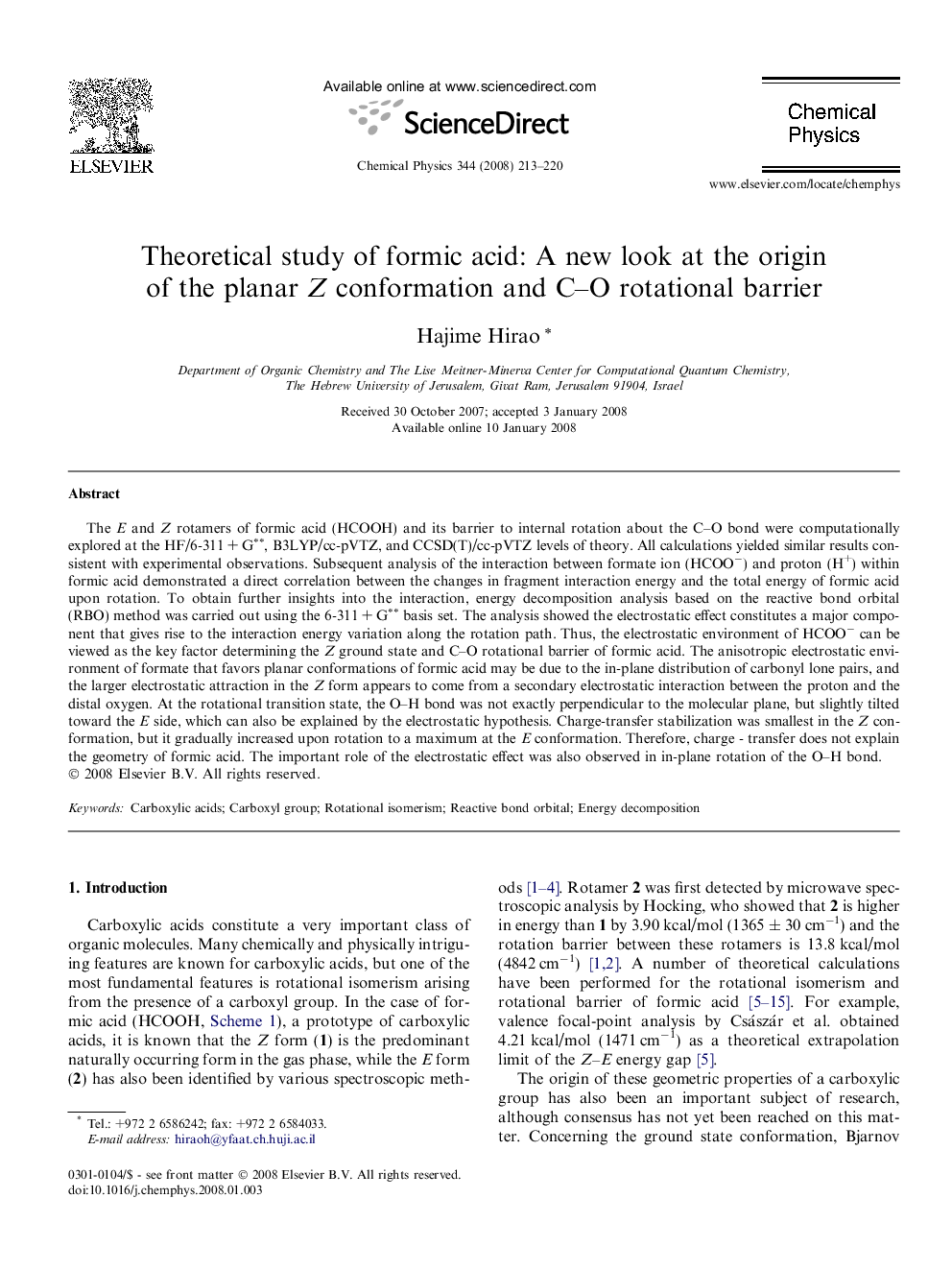| کد مقاله | کد نشریه | سال انتشار | مقاله انگلیسی | نسخه تمام متن |
|---|---|---|---|---|
| 5376191 | 1389350 | 2008 | 8 صفحه PDF | دانلود رایگان |
عنوان انگلیسی مقاله ISI
Theoretical study of formic acid: A new look at the origin of the planar Z conformation and C-O rotational barrier
دانلود مقاله + سفارش ترجمه
دانلود مقاله ISI انگلیسی
رایگان برای ایرانیان
کلمات کلیدی
موضوعات مرتبط
مهندسی و علوم پایه
شیمی
شیمی تئوریک و عملی
پیش نمایش صفحه اول مقاله

چکیده انگلیسی
The E and Z rotamers of formic acid (HCOOH) and its barrier to internal rotation about the C-O bond were computationally explored at the HF/6-311Â +Â Gââ, B3LYP/cc-pVTZ, and CCSD(T)/cc-pVTZ levels of theory. All calculations yielded similar results consistent with experimental observations. Subsequent analysis of the interaction between formate ion (HCOOâ) and proton (H+) within formic acid demonstrated a direct correlation between the changes in fragment interaction energy and the total energy of formic acid upon rotation. To obtain further insights into the interaction, energy decomposition analysis based on the reactive bond orbital (RBO) method was carried out using the 6-311Â +Â Gââ basis set. The analysis showed the electrostatic effect constitutes a major component that gives rise to the interaction energy variation along the rotation path. Thus, the electrostatic environment of HCOOâ can be viewed as the key factor determining the Z ground state and C-O rotational barrier of formic acid. The anisotropic electrostatic environment of formate that favors planar conformations of formic acid may be due to the in-plane distribution of carbonyl lone pairs, and the larger electrostatic attraction in the Z form appears to come from a secondary electrostatic interaction between the proton and the distal oxygen. At the rotational transition state, the O-H bond was not exactly perpendicular to the molecular plane, but slightly tilted toward the E side, which can also be explained by the electrostatic hypothesis. Charge-transfer stabilization was smallest in the Z conformation, but it gradually increased upon rotation to a maximum at the E conformation. Therefore, charge - transfer does not explain the geometry of formic acid. The important role of the electrostatic effect was also observed in in-plane rotation of the O-H bond.
ناشر
Database: Elsevier - ScienceDirect (ساینس دایرکت)
Journal: Chemical Physics - Volume 344, Issue 3, 13 March 2008, Pages 213-220
Journal: Chemical Physics - Volume 344, Issue 3, 13 March 2008, Pages 213-220
نویسندگان
Hajime Hirao,